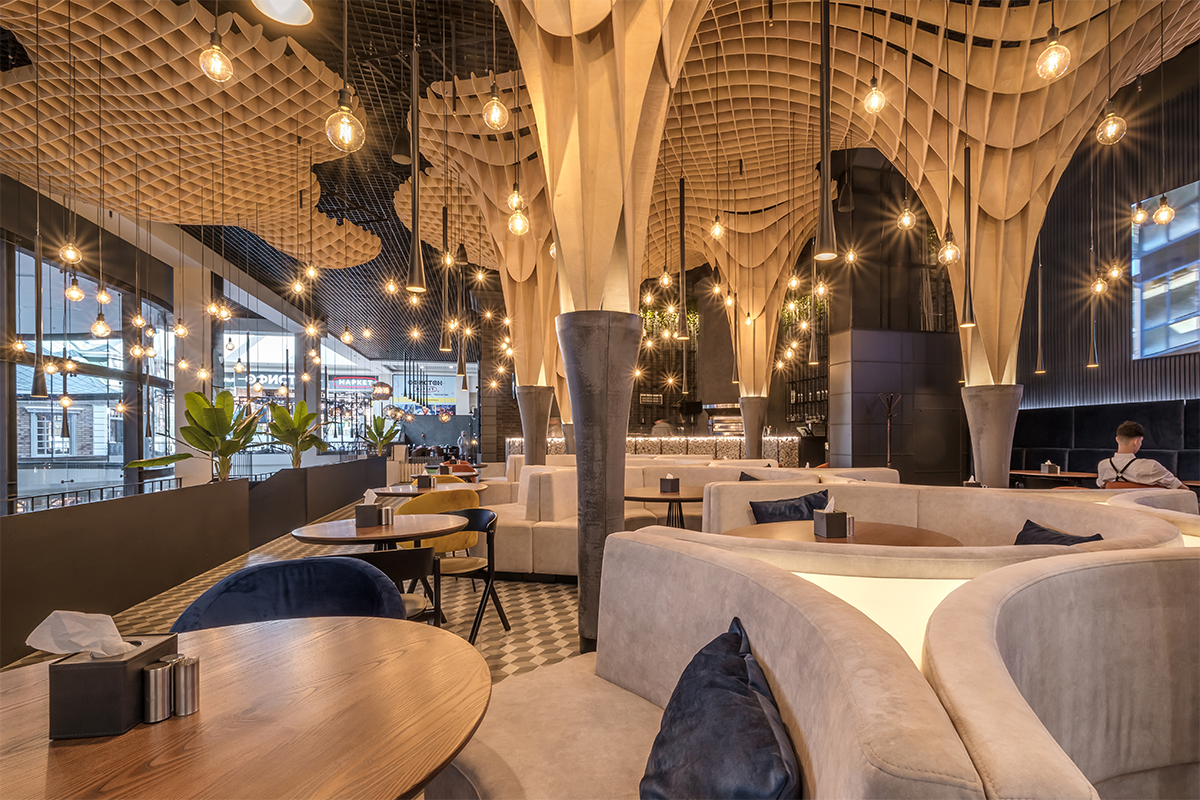Pan Asian Restaurant Islamabad: Discover Exquisite Asian Food
Pan Asian Restaurant Islamabad: Discover Exquisite Asian Food
Blog Article
Savor Genuine Eastern Food With a Pan-Asian Twist for a Cooking Adventure
Getting started on a cooking trip via authentic Eastern cuisine, boosted with a Pan-Asian twist, uses a special opportunity to check out the rich tapestry of tastes that define the area's diverse culinary traditions. As you ponder these tempting dishes, think about the cultural narratives and historic impacts that form them, each bite using a tale waiting to be discovered. Chinese food Islamabad.

Discovering Pan-Asian Tastes
In the world of global gastronomy, Pan-Asian cuisine stands out for its amazing variety and the unified interaction of tastes from different Eastern cultures. This cooking strategy commemorates the unique active ingredients and abundant practices found throughout the continent, developing a tapestry of tastes that is both enjoyable and appealing. Trick to Pan-Asian food is its ability to balance contrasting flavors-- pleasant, salted, spicy, and sour-- while highlighting the quality and high quality of each active ingredient.
From the umami-rich soy sauce of Japan to the intense chili peppers of Thailand, Pan-Asian cuisine offers a substantial scheme of tastes. These elements are typically combined in inventive methods, improving dishes with layers of complexity. For example, using great smelling natural herbs such as lemongrass and cilantro, typical in Vietnamese and Thai food, adds a refreshing brightness to meals, while the consolidation of coconut milk delivers a velvety, abundant texture.
The emphasis on fresh fruit and vegetables and fragrant spices makes certain that each dish is not just a feast for the preference buds yet also for the detects. Pan-Asian cuisine welcomes restaurants to begin on a cooking journey, discovering the huge and varied landscapes of Oriental gastronomy with every bite.
Combination Recipes to Attempt
While Pan-Asian cuisine is commemorated for its traditional tastes, the modern culinary landscape is increasingly accepting blend dishes that blend these traditional elements with influences from other regions. This ingenious strategy not only honors the abundant heritage of Oriental culinary arts however additionally introduces unique preference experiences that interest contemporary palates.
A prime instance of such a combination recipe is the Korean-Mexican taco, where seasoned bulgogi beef is wrapped in a warm tortilla, covered with kimchi and a zesty gochujang-infused salsa. This combination weds the bold, tasty flavors of Korea with the dynamic, fresh elements of Mexican food. Likewise, sushi burritos have obtained popularity, amalgamating the delicate virtuosity of Japanese sushi with the hearty, hand-held comfort of a burrito, typically including combination active ingredients like tempura shrimp and avocado with a drizzle of wasabi mayo.
One more significant recipe is Thai curry ramen, which instills the velvety, aromatic flavors of Thai curry right into the soothing broth of typical Japanese ramen, creating an unified blend that tantalizes the detects. These combination recipes prolong past plain uniqueness; they stand for a culinary discussion between societies, urging expedition and development in the world of Pan-Asian food.
Vital Ingredients and Spices
To absolutely value Pan-Asian cuisine, one should recognize the crucial ingredients and flavors that form its foundation. This varied culinary style attracts from an abundant tapestry of Oriental practices, employing a harmonious mix of flavors and appearances. Secret active ingredients consist of soy sauce, fish sauce, and oyster sauce, which impart a mouthwatering umami deepness vital to Eastern dishes. Complementary to these are rice vinegar and mirin, providing a delicate level of acidity and sweetness.
Fragrant elements are essential, with ginger, lemongrass, and garlic being ubiquitous across various Pan-Asian recipes. These ingredients provide a great smelling base that boosts the intricacy of tastes. Spices such as celebrity anise, cardamom, and cinnamon introduce heat and character, resembling influences from areas like China and India.

Food Preparation Techniques and Tips
Mastering the art of Pan-Asian food needs familiarity with its distinct cooking strategies, each adding to the lively tapestry of flavors this cooking custom is celebrated for. Central to these methods is the stir-fry, a quick cooking technique that maintains the nutritional honesty and vibrant colors of components. Utilizing a wok, the stir-fry method permits even heat circulation, vital for attaining the particular structure and taste balance of Pan-Asian dishes.
Another essential technique is steaming, particularly widespread in Chinese cuisine. This gentle technique maintains the natural flavors and nutrients of ingredients, making it excellent for fish and shellfish and vegetables. Dumplings, a beloved staple, typically benefit from steaming, resulting in soft, succulent structures.
Barbecuing, also essential, presents smoky depths to meals such as Oriental bulgogi asian restaurant isb or Japanese yakitori (asian restaurant isb). This technique frequently involves seasoning active ingredients, allowing flavors to permeate deeply prior to food preparation over an open flame or hot plate
Lastly, understanding the art of balancing tastes-- wonderful, sour, salted, bitter, and umami-- is important. Properly layering these aspects can raise a recipe from ordinary to remarkable, offering a complex and satisfying cooking experience that personifies the significance of Pan-Asian cuisine.
Eating Experiences Worldwide
Around the world, Pan-Asian food uses an unmatched dining experience, commemorated for its abundant tapestry of flavors and lively discussions. This cooking sensation has transcended cultural limits, catching the hearts and tastes buds of food lovers worldwide. In multicultural cities fresh York, London, and Sydney, Pan-Asian dining establishments work as fusions where culinary traditions from Thailand, Japan, China, and past merge, giving restaurants with an eclectic mix of meals that highlight the area's variety.
The global charm of Pan-Asian cuisine exists in its ability to offer both authenticity and technology. Cooks masterfully marry standard components such as lemongrass, soy sauce, and miso with contemporary strategies, leading to meals that are both refreshingly new and familiar. This fusion permits diners to get started on a cooking journey that respects heritage while accepting modernity.
Additionally, eating experiences are elevated via thoughtfully made settings that mirror the values of Pan-Asian aesthetics. From minimal Japanese-inspired interiors to vibrant Thai-themed spaces, each dining establishment uses an unique ambiance that matches the cooking offerings. Therefore, customers are not simply taking in a dish but partaking in a cultural experience, making Pan-Asian eating a truly international phenomenon.
Conclusion
The expedition of Pan-Asian cuisine offers an extensive understanding of the elaborate interplay of flavors and culinary practices across Asia. By accepting combination dishes such as Thai curry ramen and sushi burritos, the cooking journey not only highlights the flexibility of typical active ingredients yet also showcases ingenious modern techniques. This gastronomic journey, enriched by cooking approaches and crucial seasonings, provides an one-of-a-kind possibility to value the social variety and culinary creativity that specify Pan-Asian cuisine on a global scale.
Beginning on a cooking journey with authentic Oriental cuisine, boosted with a Pan-Asian spin, provides an unique opportunity to explore the rich tapestry of tastes that define the area's varied cooking customs.In the world of international gastronomy, Pan-Asian cuisine stands out for its exceptional variety and the unified interaction of tastes from numerous Eastern societies. Key to Pan-Asian food is its capacity to balance contrasting flavors-- wonderful, salty, spicy, and sour-- while highlighting the quality and high quality of each ingredient.

Report this page